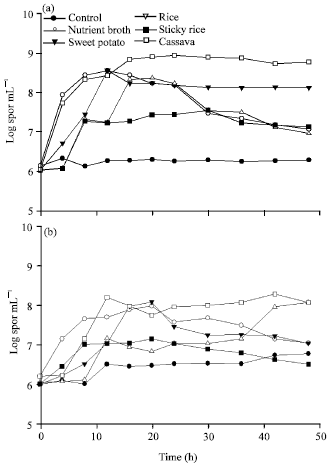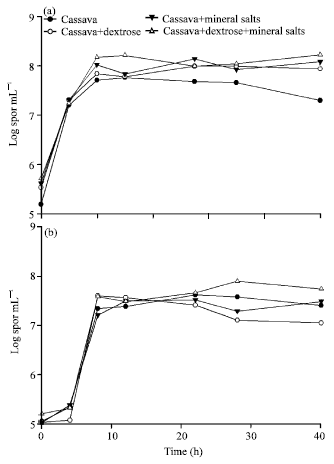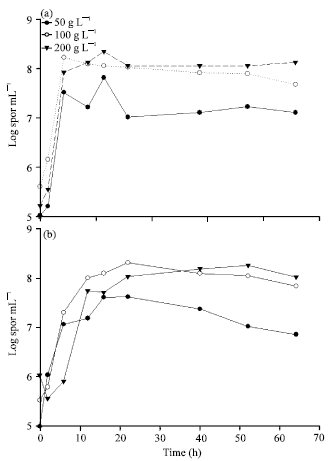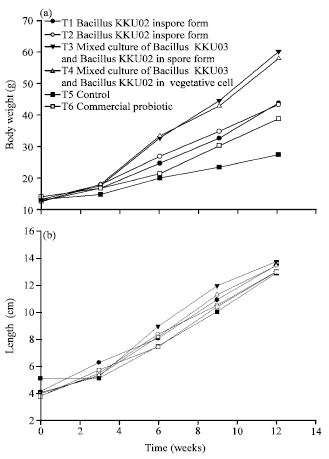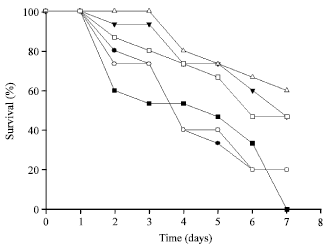Research Article
Low Cost Medium for Spore Production of Bacillus KKU02 and KKU03 and the Effects of the Produced Spores on Growth of Giant Freshwater Prawn (Macrobrachium rosenbergii de Man)
Graduate School, Khon Kaen University, Khon Kaen, 40002, Thailand
Sirirat Deeseenthum
Department of Biotechnology, Faculty of Technology, Mahasarakham University, Maha Sarakham, 44150, Thailand
Vichai Leelavatcharamas
Agricultural Biotechnology Research Center for Sustainable Economy, Faculty of Agriculture, Khon Kaen, 40002, Thailand









